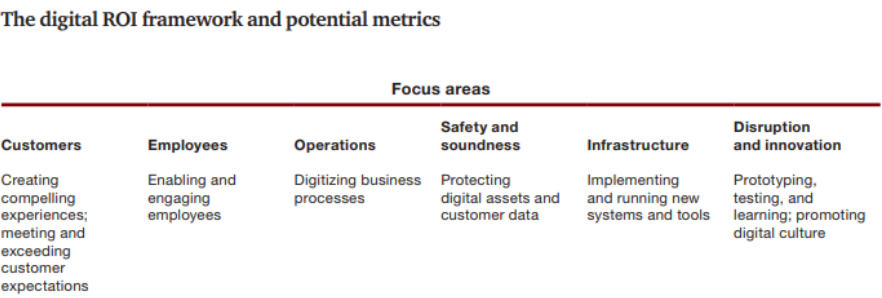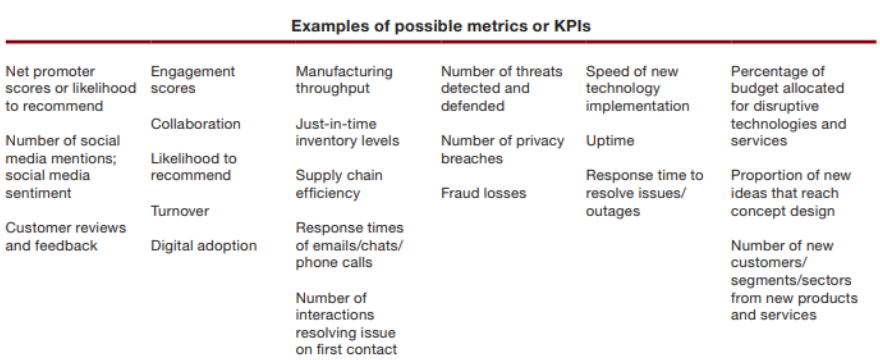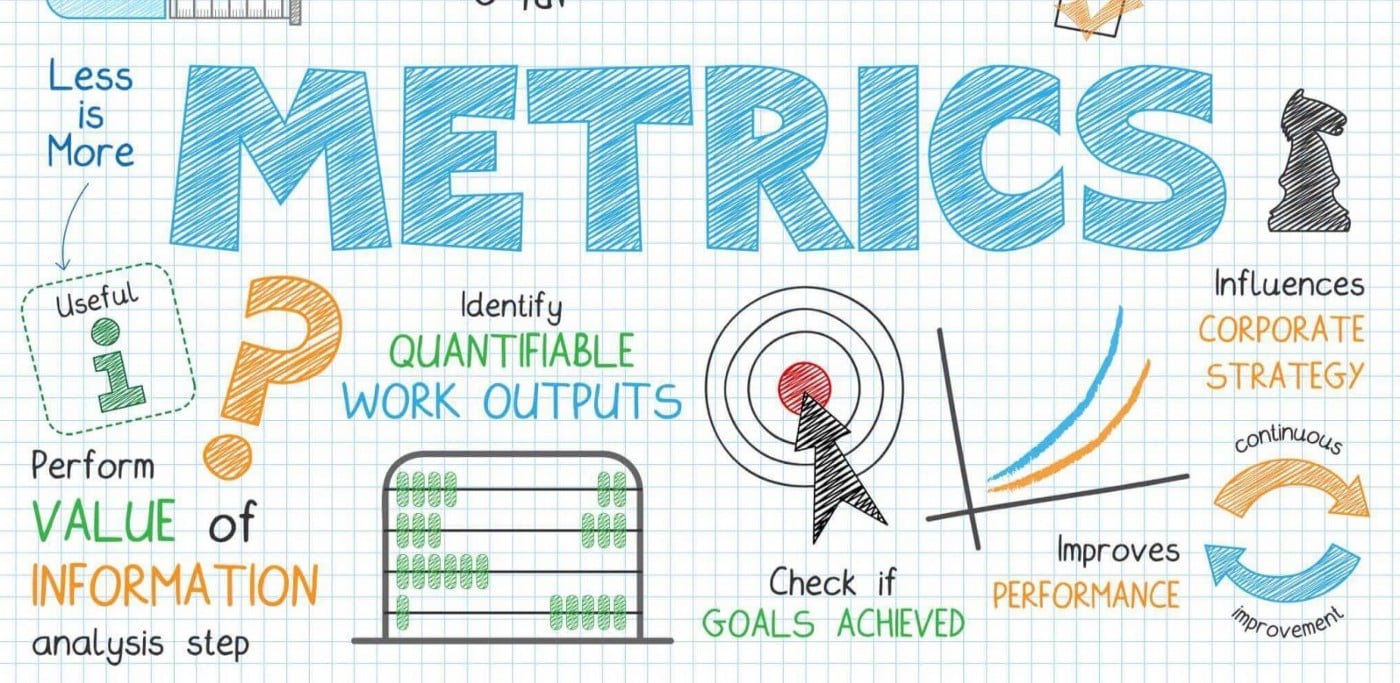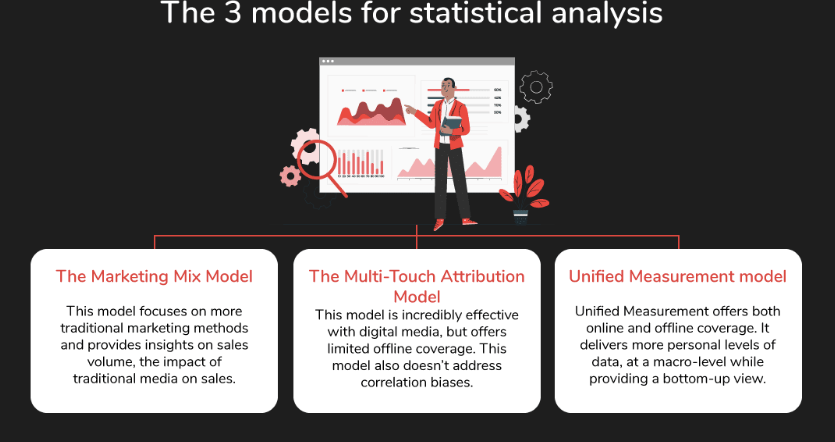Simply having a good digital transformation and execution strategy is not enough to guarantee success. Businesses need to continually measure the return on investment (ROI) from their transformation initiatives to ensure that they are aligning with larger business goals.
Let’s take a look at how to measure digital transformation ROI and how businesses can make more informed decisions about their transformation strategies and ensure that they are getting the most out of their investment.
Table of Contents
Metrics & Key Factors to Measure ROI of Digital Transformation
Any business looking to invest in digital transformation needs to be aware of the potential return on their investment. According to Grand View Research, the market size for global digital transformation is expected to grow at a compound annual growth rate (CAGR) of 23% until 2030.
As businesses increasingly move towards digital operations, it’s important to consider the various performance areas that will be impacted. PwC has proposed a digital ROI framework that takes into account employees, customers, infrastructure, innovation, and safety and soundness.

Within each of these areas, there are opportunities for businesses to improve their operations and bottom line. However, it’s important not to try to tackle all of these areas at once. Doing so can overwhelm the workplace and lead to frustration and resistance to change. Instead, it’s best to focus on one area at a time and set a goal for how you want to improve. By taking a phased approach, you can ensure that each area gets the attention it needs and that your employees are able to successfully adapt to the changes.
Metrics to set for measuring ROI include:
- Cost reduction of operations
- Productivity boost
- Business growth
- Data security
- Organizational culture


What steps must we follow to have the most appropriate ROI?
Every organization is different. They have different workplace standards, philosophies, and objectives. However, C-suite executives share similar aspirations for their respective organizations to grow and command the market and augment shareholder value. While every organization is different, there are ways to measure digital transformation ROI that can be applied to any organization. By understanding how digital transformation can help organizations achieve their specific goals, executives can more easily invest in and implement digital initiatives that will have a positive impact on the bottom line.
With this in mind, here are steps on the guide that help you can measure digital transformation ROI.
Step 1: Identify initiatives
In order to be successful, businesses must be able to adapt to the ever-changing landscape. This means constantly evaluating the market and identifying opportunities that can help the business work better. Of course, this is easier said than done. With so many different factors to consider, it can be difficult to know where to even begin. However, there are a few steps that can help simplify the process.
- First, take a close look at your target market. What needs are not being met? What trends are emerging?
- Second, consult with experts in your field. They may have insights that you haven’t considered.
- Finally, don’t be afraid to think outside the box. Sometimes the best opportunity is one that no one has thought of yet.
By taking these steps, you can position your business for success in the ever-changing marketplace.
Step 2: Review business objectives
Every business has different objectives and priorities, but in order to be successful, it is crucial to focus on a few key goals. Trying to accomplish too many things at once can lead to subpar results in all areas.
For example, if a company’s primary goal is to increase revenue, they may sacrifice customer satisfaction in the process. Or, if customer satisfaction is the top priority, they may not be as productive. It is important to find the right balance of goals that will work best for the company.
Step 3: Define investment goals
Defining investment goals is a detailed process that requires careful planning and execution. The first step is to determine what type of investment is needed. For example, is the investment for staffing, infrastructure, or technology? Once the type of investment is known, the next step is to gather information on how much money is required.
This figure will be based on a number of factors, including the size of the business and the projected growth rate. Once the amount of money needed is determined, it is then possible to develop a plan for how to achieve the investment goal.
Step 4: Identify value metrics

One of the most important steps in launching a digital transformation initiative is to establish clear metrics for success. These metrics should be closely linked to value creation and delivery and should be updated on a regular basis to track the progress of the project. By doing this, organizations can ensure that they are making the most of their digital transformation investments and that they are on track to meet their desired outcomes. Establishing clear success metrics is therefore crucial for any organization embarking on a digital transformation journey.
Step 5: Determine time frames
Any business owner knows that return on investment (ROI) is important. But what often gets forgotten is that ROI doesn’t exist in a vacuum. In order to get an accurate picture of digital transformation ROI, it’s essential to set a strict time frame for measurement. This will help to ensure that the numbers are not skewed by factors outside of the timeframe under consideration. In addition, it’s important to take a look at the baseline metrics to understand where the numbers are now. Once that is complete, the next step is to set incremental goals that can be monitored within the timeframe. By taking these steps, painting an accurate picture of ROI becomes possible.
How can you improve digital transformation ROI?
Propagating a good data strategy
In the business world, they often say that data is king. And there’s a good reason for that. After all, data is essential for measuring ROI and understanding the wants and needs of your customers. Without data, it would be nearly impossible to make informed decisions about your marketing strategy. Fortunately, there are now a variety of digital marketing solutions that can help you collect and analyze data. By using these tools, you can gain a deeper understanding of your customer base and make more informed decisions about your marketing efforts. As a result, you’ll be better positioned to achieve your desired ROI.
You can discover these through:
- Developing customer personas
- Surveys
- Social listening
- Touchpoint maps
- Journey maps
- Predictive analysis
- Segmentation
Invest in analytics

Trying to improve your return on investment can feel like a daunting task, but there are some simple steps you can take to get started. One of the most important things you can do is invest in tools for data analysis. This will help you track your progress and make sure you’re on the right track. Additionally, it’s important to not get lost in vanity metrics. These are things like follower count or blog views, which might look impressive but don’t actually mean anything in terms of ROI. Instead, focus on value efficiency metrics that will help you generate the most return. With the right data in place, you’ll be well on your way to improving your digital transformation ROI.
Reduce overhead costs
Currently, we’re seeing a lot of costs going into advertising. According to Hubspot, an estimated 60% of digital marketing spending is wasted.
Because of the shift in consumer behavior, a lot of money that was spent on advertising has gone down the drain. It has coerced marketers into their strategies that once worked in the past, are no longer in effect, and have yielded no returns.
However, nowadays, there’s more risk involved since the budgets have increased significantly. And we’re seeing even more wastage as marketing undergoes its digital transformation. It’s important to understand why this is happening and what can be done to mitigate the risks involved so that your marketing budget isn’t going to waste.
Keep up with the changes in customer behavior
These days, customers are savvier and more empowered than ever before. They have access to a wealth of information at their fingertips, and they know how to use it to find the best deals and products. As a result, traditional advertising is losing its impact. In fact, ad loss reached an all-time high last year.
So how can marketers cut back on this ad loss? The answer lies in data. By taking a 360º view of all of their data, marketers can gain insights into customer behavior that they can use to adjust their strategies. HubSpot details three models of statistical analysis for marketing: the attribution model, the lifetime value model, and the customer retention model. Each of these models provides valuable insights that can help marketers reduce ad loss and improve their campaigns.

Circling back to Digital ROI
The formula for Digital ROI is as follows:

Measuring your digital transformation ROI can be tricky and it depends on your business goals. It could be anything from brand awareness to increased website traffic to more sales. The key is to map your digital marketing activities to your business goals. Once you’ve done that, you can start to measure your digital transformation ROI.
There are a number of ways to do this, but one of the most common is to track the leads that come from your digital marketing efforts. This could be anything from email signups to contact forms filled out on your website. By tracking these leads, you can start to see how effective your digital marketing campaigns are in relation to your business goals.
Another way to measure your Digital ROI is to look at the conversions that come from your digital marketing campaigns. This could be anything from website visitors who become customers or email subscribers who make a purchase.
The good news is that, unlike traditional forms of marketing, digital marketing is very measurable. There are a number of tools available that allow you to track your progress and gauge your results. This means that you can fine-tune your strategy as you go along, and ultimately, achieve a higher return on investment. One of the famous tools for tracking these conversions and starting to get an idea of how well your digital marketing activities are performing is HubSpot – one of the best CRM & Marketing Automation platforms that brings everything you need to deliver a superior customer experience.
So if you’re looking to get more out of your digital marketing efforts, focus on achieving a positive social ROI. With a team of certified experts and many years of experience in digital transformation, we know exactly how to help you make the most of HubSpot’s capabilities for your business growth.











